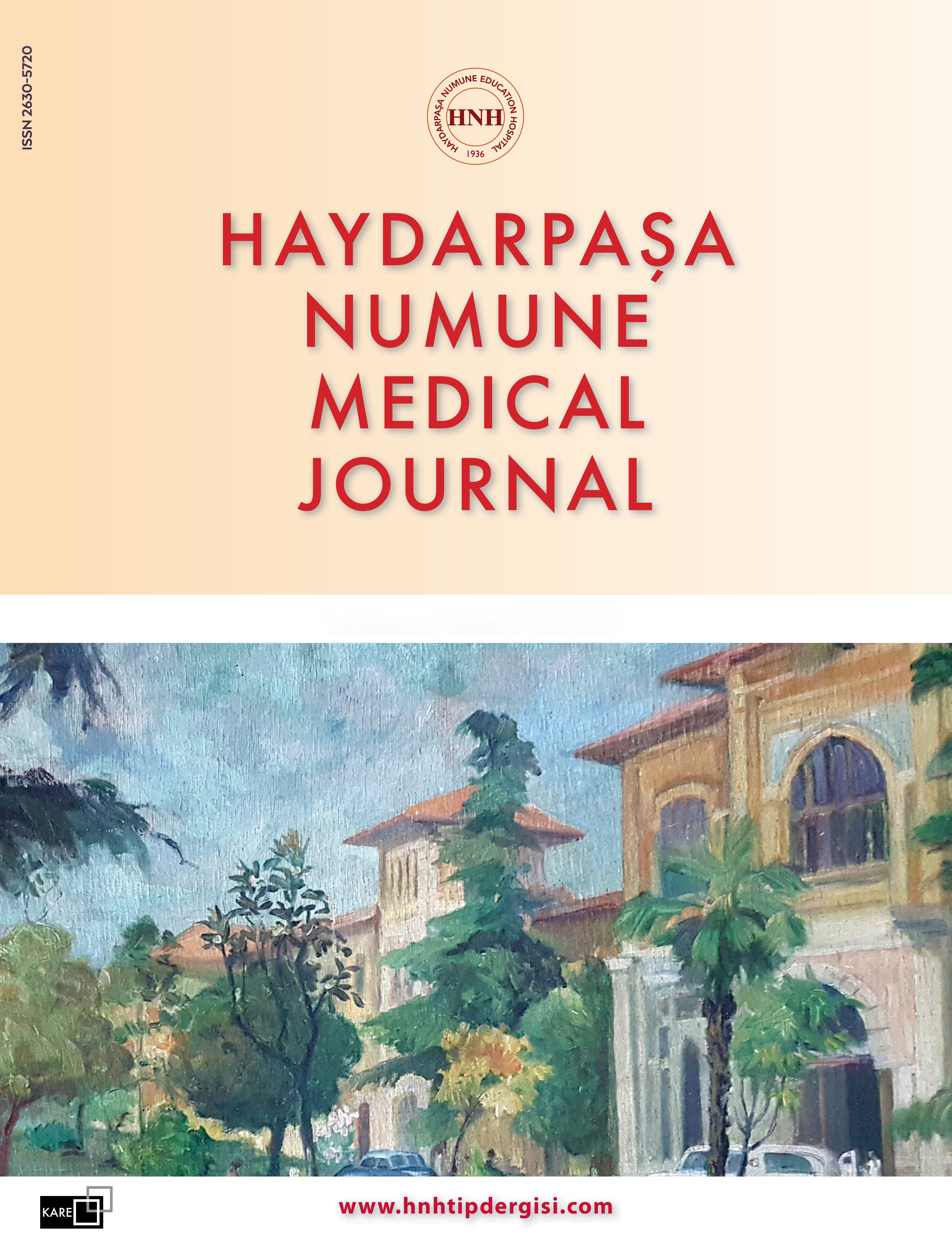Retrospective Evaluation of 214 Cases of Down Syndrome
Fatih Akın, Abdullah Yazar, Esra TüreDepartment of Pediatrics, Necmettin Erbakan Universitiy, Meram Faculty of Medicine, Konya, TurkeyINTRODUCTION: This study was a retrospective evaluation of the clinical and demographic features, as well as the congenital and acquired diseases of patients with Down syndrome (DS) followed up at the clinic.
METHODS: The hospital admission records and files of patients diagnosed with DS before the age of 18 were reviewed retrospectively. The age, gender, drugs used, and clinical diagnoses of the patients were recorded and statistical analysis was performed.
RESULTS: The data of a total of 214 DS patients who were admitted to the pediatric clinic between January 2014 and January 2017 were analyzed. In all, 96 (44.9%) patients were female and 118 (55.1%) were male. The mean age of the total group was 6.01±3.97 years. The mean age of the boys was 6.15±3.96 years, and it was 5.83±4.01 years for the girls. There was a significant difference in immunodeficiency between genders: 73.3% (n=33) of the 45 patients who were found to be immunodeficient were male (p=0.006). When the distribution of cases was analyzed according to concomitant diagnoses and age group, it was observed that 42.1% (n=24) of the 57 patients who were diagnosed with hypothyroidism were between 6 and 10 years of age (p=0.00), 52.1% (n=25) of the 48 patients who were diagnosed with epilepsy were between 6 and 10 years of age (p=0.00), all of the 13 patients who were diagnosed with anemia were between 0 and 5 years of age (p=0.009), 68.9% (n=31) of the 45 patients who were diagnosed as immunodeficient were between 0 and 5 years of age (p=0.019), and 90.6% (n=29) of the 32 patients who were diagnosed with hearing loss were between 0 and 5 years of age (p=0.00). There was a statistically significant difference in the age group of 0 to 5 years of age.
DISCUSSION AND CONCLUSION: Periodic follow-up of children with DS should be performed in terms of additional diseases. With appropriate and timely treatment approaches, the quality of life of these patients can be improved.
Down Sendromlu 214 Olgunun Retrospektif Değerlendirilmesi
Fatih Akın, Abdullah Yazar, Esra TüreNecmettin Erbakan Üniversitesi, Meram Tıp Fakültesi, Çocuk Sağlığı ve Hastalıkları Bilim Dalı, KonyaGİRİŞ ve AMAÇ: Bu çalışmada kliniğimizde Down sendromu (DS) tanısı ile izlenen olguların klinik, demografik özellikleri, doğumsal ve edinsel hastalıklarının retrospektif olarak incelenmesi amaçlanmıştır.
YÖNTEM ve GEREÇLER: DS tanısı almış 18 yaş altı hastaların, hastane otomasyon sistemine girilen kayıtları ve yatış dosyaları retrospektif olarak incelendi. Hastaların yaş, cinsiyet, kullandığı ilaçlar ve klinik tanıları kaydedilerek istatistiksel analizi yapıldı.
BULGULAR: Çocuk kliniğine Ocak 2014-Ocak 2017 tarihleri arasında başvuran 214 DS tanısı almış hastanın 96inin kız (%44,9) ve 118inin erkek (%55,1) olduğu tespit edildi. Hastaların yaş ortalaması 6,01±3,97 olarak bulundu. Erkek çocukların yaş ortalaması 6,15±3,96 iken kız çocuklarınınki 5,83±4,01 olarak tespit edildi. Olguların cinsiyete göre dağılımı incelendiğinde immün yetmezlik tanısı alan 45 hastanın %73.3ünün (n: 33) erkek olduğu görüldü (p: 0,006). Olguların yaş gruplarına göre dağılımı incelendiğinde hipotiroidi tanısı alan 57 hastanın %42,1inin (n: 24) 6-10 yaş arasında (p: 0,00), epilepsi tanısı alan 48 hastanın %52,1inin (n: 25) 6-10 yaş arasında (p: 0,00), anemi tanısı alan 13 hastanın %100ünün (n: 13) (p: 0,009), immün yetmezlik tanısı alan 45 hastanın %68,9unun (n: 31) (p: 0,019), işitme kaybı tanısı alan 32 hastanın %90,6sının (n: 29) (p: 0,00) istatistiksel anlamlı olarak 0-5 yaş arasında olduğu görüldü.
TARTIŞMA ve SONUÇ: DSli çocukların, gelişebilecek ilave hastalıklar açısından periyodik izlemlerinin yapılması çok önemlidir. Bu sayede uygun ve zamanında tedavi yaklaşımları ile bu hastaların yaşam kalitesi daha da artacaktır.
Manuscript Language: Turkish
















